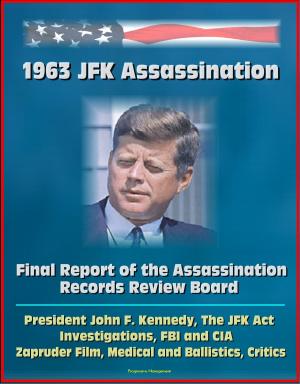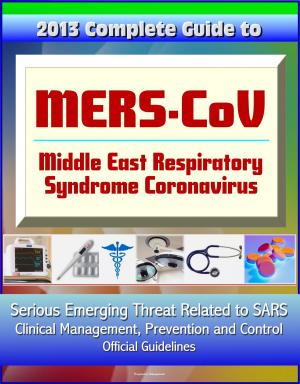Followership: An Essential Ingredient of Leadership - Study of Toxic Leadership with Atrocity Case Studies of My Lai Massacre, Abu Ghraib Prisoner Abuse, and Iraq War Black Hearts Brigade Murders
Nonfiction, History, Military, Vietnam War, Asian| Author: | Progressive Management | ISBN: | 9780463917893 |
| Publisher: | Progressive Management | Publication: | May 5, 2018 |
| Imprint: | Smashwords Edition | Language: | English |
| Author: | Progressive Management |
| ISBN: | 9780463917893 |
| Publisher: | Progressive Management |
| Publication: | May 5, 2018 |
| Imprint: | Smashwords Edition |
| Language: | English |
This excellent report has been professionally converted for accurate flowing-text e-book format reproduction.
The U.S. Army continues to face toxic leadership despite an increase in the training on the subject in the last five years. Toxic Followership is an aspect that both the U.S. Army and the majority of civilian organizations overlook. In an attempt to determine what effect, if any, toxic followership has on leaders within the military, three case studies were analyzed. These case studies were the massacre at My Lai, prisoner abuse at Abu Ghraib, and the rape and murder of a family by soldiers of the Black Hearts Brigade. Common themes across the three case studies were then laid over a leadership model called the Toxic Triangle by Art Padilla. The research validates the Toxic Triangle model. The absence of the word followers within Army regulations, except to mention that every leader is a follower, severely undermines the impact that they can have on a leader. If this relationship is not clearly understood, and if steps are not taken to mitigate the negative effects toxic followership may have, it could lead to future atrocities similar to those of My Lai, Abu Ghraib, and within the Black Hearts Brigade.
In order to successfully address toxic leadership, the Army must also understand the contributions that followers make toward that toxicity. This research seeks to identify what influence toxic followers have on military operations, so the Army can address followership in a way that is equal to leadership. Padilla's toxic triangle presents toxic leadership as a combination of all three elements: a destructive leader, toxic followers, and a conducive environment. If the Army continues to only address a portion of that, the destructive leader, then it will never be able to solve the problem of toxicity within the organization.
CHAPTER 1 INTRODUCTION * Overview of the Issues * Background: Leadership Models * Statement of the Problem * Purpose of the Study * Research Questions * Case Study Context * My Lai * Abu Ghraib * Black Hearts Brigade * Significance of the Study * Limitations of the Study * CHAPTER 2 LITERATURE REVIEW * Leadership * Toxic Leadership * Followership * Toxic Followership * Leadership-follower Model * Case Study Reviews * My Lai * Abu Ghraib * Black Hearts Brigade * CHAPTER 3 RESEARCH METHODOLOGY * Qualitative Research * Case Study Research Design and Methods * Research Design * Data Collection * Data Analysis * Ethical Considerations: Bias * Research Objective * Case Study Selection * Summary * CHAPTER 4 ANALYSIS * Leadership/Toxic Leadership * My Lai * Captain Ernest Medina * Lieutenant William L. Calley * Abu Ghraib * Staff Sergeant Ivan Fredrick * Corporal Charles Graner * Black Hearts Brigade * Specialist Paul Cortez * Followership/Toxic Followership * My Lai * Abu Ghraib * Black Hearts Brigade * Environment * My Lai * Abu Ghraib * Black Hearts Brigade * Themes * Leadership/Toxic Leadership * Followership/Toxic Followership . * Environment * Conclusion * CHAPTER 5 CONCLUSIONS AND RECOMMENDATIONS * Conclusions * Secondary Research Question * Primary Research Question * Recommendations * BIBLIOGRAPHY
This excellent report has been professionally converted for accurate flowing-text e-book format reproduction.
The U.S. Army continues to face toxic leadership despite an increase in the training on the subject in the last five years. Toxic Followership is an aspect that both the U.S. Army and the majority of civilian organizations overlook. In an attempt to determine what effect, if any, toxic followership has on leaders within the military, three case studies were analyzed. These case studies were the massacre at My Lai, prisoner abuse at Abu Ghraib, and the rape and murder of a family by soldiers of the Black Hearts Brigade. Common themes across the three case studies were then laid over a leadership model called the Toxic Triangle by Art Padilla. The research validates the Toxic Triangle model. The absence of the word followers within Army regulations, except to mention that every leader is a follower, severely undermines the impact that they can have on a leader. If this relationship is not clearly understood, and if steps are not taken to mitigate the negative effects toxic followership may have, it could lead to future atrocities similar to those of My Lai, Abu Ghraib, and within the Black Hearts Brigade.
In order to successfully address toxic leadership, the Army must also understand the contributions that followers make toward that toxicity. This research seeks to identify what influence toxic followers have on military operations, so the Army can address followership in a way that is equal to leadership. Padilla's toxic triangle presents toxic leadership as a combination of all three elements: a destructive leader, toxic followers, and a conducive environment. If the Army continues to only address a portion of that, the destructive leader, then it will never be able to solve the problem of toxicity within the organization.
CHAPTER 1 INTRODUCTION * Overview of the Issues * Background: Leadership Models * Statement of the Problem * Purpose of the Study * Research Questions * Case Study Context * My Lai * Abu Ghraib * Black Hearts Brigade * Significance of the Study * Limitations of the Study * CHAPTER 2 LITERATURE REVIEW * Leadership * Toxic Leadership * Followership * Toxic Followership * Leadership-follower Model * Case Study Reviews * My Lai * Abu Ghraib * Black Hearts Brigade * CHAPTER 3 RESEARCH METHODOLOGY * Qualitative Research * Case Study Research Design and Methods * Research Design * Data Collection * Data Analysis * Ethical Considerations: Bias * Research Objective * Case Study Selection * Summary * CHAPTER 4 ANALYSIS * Leadership/Toxic Leadership * My Lai * Captain Ernest Medina * Lieutenant William L. Calley * Abu Ghraib * Staff Sergeant Ivan Fredrick * Corporal Charles Graner * Black Hearts Brigade * Specialist Paul Cortez * Followership/Toxic Followership * My Lai * Abu Ghraib * Black Hearts Brigade * Environment * My Lai * Abu Ghraib * Black Hearts Brigade * Themes * Leadership/Toxic Leadership * Followership/Toxic Followership . * Environment * Conclusion * CHAPTER 5 CONCLUSIONS AND RECOMMENDATIONS * Conclusions * Secondary Research Question * Primary Research Question * Recommendations * BIBLIOGRAPHY















